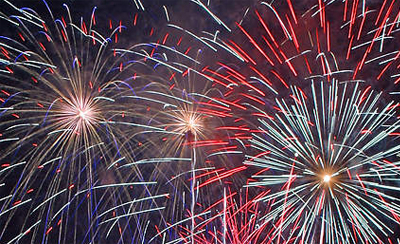How Fireworks Get Their Vibrant Colors
Prior to the 1800’s, fireworks only displayed flashes of orange and golden light. While bland in color, people found these sparks to be fascinating, using them to ward off evil spirits, honor military victories, and enhance public ceremonies. It wasn’t until later that firework shows became the colorful art form you see in holiday celebrations and other festivities today.
Sparks of Color
In the 1830’s, Italian firework artists learned how to create color in firework displays by adding metal salts to their chemical composition. When exposed to a flame, each metal salt produces light in specific color wavelengths. For example, sodium produces yellow, strontium produces red, and barium produces green. Mixing chemicals can produce a range of hues, including purple made from a mixture of strontium and copper compounds. This discovery helped transform pyrotechnic shows into more elaborate, dazzling displays.
In today’s aerial firework shows, metal salt chemicals are packed into black balls (referred to as stars ) and spaced throughout the firework shell containing gunpowder. Once ignited, the firework launches into the sky while a fuse inside the shell slowly burns. After reaching a certain point, this fuse causes the firework to explode and propel the stars into various directions. The stars burst into colorful sparks of light specific to the metal salts used and, in reaction to these spectacular lights, sounds of OOH’s and AAH’s are often heard from onlookers below.
Without this advancement in pyrotechnic chemistry, our holidays and festivities may still be celebrated with the colorless fireworks of early times. Somehow this just wouldn’t be the same.











